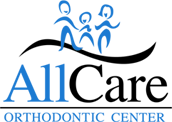Type of Appliances
Orthodontists select the type of appliance that suits each patient’s needs from these and other appliances. As you can see, appliances can be as different as each patient seeking orthodontic treatment. You can trust your orthodontist to choose the appropriate appliance for your treatment because orthodontists have two-to-three academic years of university-based specialty training in orthodontics and dentofacial orthopedics.
To successfully complete the orthodontic treatment plan, patients must work together with the orthodontist. The teeth and jaws can only move toward their corrected positions if the patient consistently wears the elastics (rubber bands), headgear, or other appliances as prescribed.
Elastics (Rubber Bands) | Headgear | Reverse Pull Facemask
Herbst® Appliance | Forsus® Springs | Palatal Expander (RPE)
Retainers | Separators or Spacers | Temporary Anchorage Devices (TADs)
Fixed Appliances
Examples of fixed orthodontic appliances are the brackets, bands and wires most often associated with “braces.”
Pendex appliances, distal jet appliances and coil springs of different materials are used primarily to move teeth. Devices such as Forsus springs or Jasper jumpers are often used in place of elastics, but all share a common purpose of making upper and lower teeth fit together better. Lip bumpers may be used for patients with lower arch crowding.
Your orthodontist may also use some fixed devices to hold teeth in place while other teeth are moved. These common appliances include lingual holding arches, Nance appliances and transpalatal arches. A quad helix is an appliance made of heavy wire that moves teeth, but can also have an orthopedic effect.
Palatal expanders are used to make the upper jaw wider. Functional appliances are used to normalize growth discrepancies between the upper and lower jaw.
Removable Appliances
Removable orthodontic appliances can have many shapes and appearances. “Retainers” are examples of one type. Retainers usually just hold teeth in their new positions after active orthodontic treatment (braces) is complete, but springs or elastics can be added to these types of appliances to move teeth. Rubber bands, or “elastics,” are used in almost every treatment to help move teeth into a correct position.
Various types of headgears are also commonly used removable orthopedic correctors. Some, such as cervical pull or high pull, help to correct conditions when the lower jaw growth does not keep up with upper jaw growth, while other types, such as reverse pull headgear, face masks and chin cups, help when upper jaw growth does not keep up with lower jaw growth.
Face mask is used when the upper jaw and/or teeth need to be brought forward.
